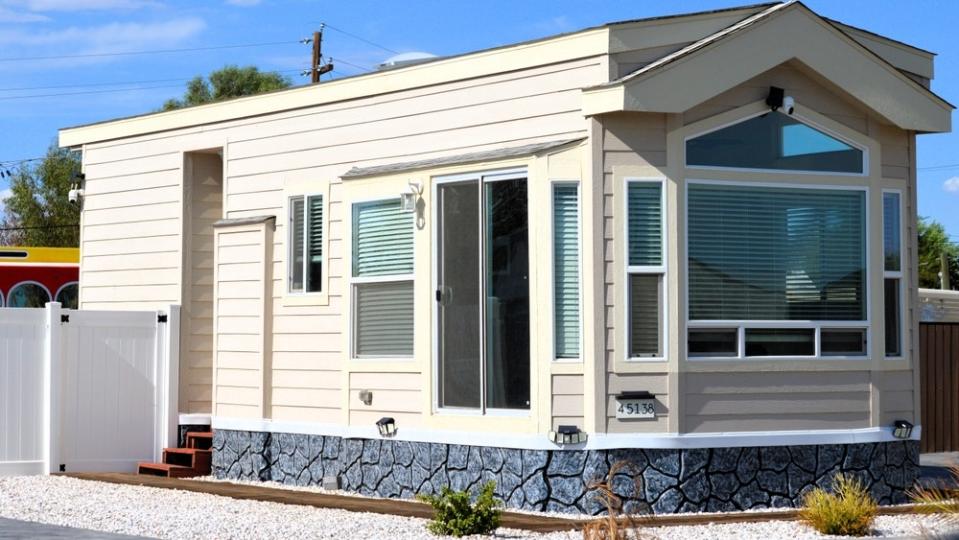ADUs Accounted For 20% Of California's New Home Construction In 2023

Accessory Dwelling Units (ADUs) have surged in popularity in California. With the median home price reaching $900,000, both citizens and legislators are seeking alternative housing solutions. A California Department of Finance study reveals that ADUs accounted for 20% of new home construction 2023.
This means one in every five homes built in California last year was an ADU, doubling from 2020 when only one in 10 new homes was an ADU. The newfound popularity of ADUs proves that necessity is the mother of invention. California home prices have been relentlessly marching towards unaffordability for the past several decades, and a lack of inventory is one of the main contributing factors.
While homeowners benefit from rising home values, the $900,000 median price effectively locks out all but the most affluent buyers. Public servants such as teachers, first responders, and government employees in cities like Los Angeles or San Francisco are moving further away from the communities they protect to keep pace. The current high interest rates only limit their buying power even further.
Don't Miss:
A new fund backed by Jeff Bezos offers a 7-9% target yield with monthly dividends. Here’s how you can invest today.
Warren Buffett once said, "If you don't find a way to make money while you sleep, you will work until you die." These high-yield real estate notes that pay 7.5% – 9% make earning passive income easier than ever.
The law of supply and demand is the real 800 lb elephant in the room. Many of California's largest cities enacted restrictive zoning codes in the 1940s, 50s, and 60s to limit population density. These laws designated large areas for single-family residences and enforced minimum lot sizes, effectively controlling urban sprawl.
Lots were often much larger than necessary, with 800-1000 square foot bungalows four or five times their size on lots. When these zoning restrictions were enacted, there was no shortage of housing inventory.
Metro areas like Los Angeles and San Francisco rapidly expanded into suburbs, and restrictive zoning was seen as a way to curb sprawl. Ironically, these large lot sizes now facilitate ADU construction, as many city lots are ideal for adding ADUs.
However, several hurdles had to be cleared before California's ADU boom. By 2017, California faced a severe housing crisis. Two critical bills passed by the state legislature helped. Assembly Bill 68, passed in 2019, reduced ADU permit approval time from 120 days to 60 days and prevented municipalities from imposing lot size or parking requirements.
Trending: Are you rich? Here’s what Americans think you need to be considered wealthy.
Assembly Bill 881 further allowed property owners to build ADUs without living on the same property, enabling ADU investments. These laws opened the floodgates for ADU construction. Some property owners built ADUs for family members, while others saw it as a profitable investment.
Other property owners capitalized on the flexibility to profit from unused land. These laws have brought thousands of new housing units to a state in desperate need of them. However, the main beneficiaries are those who own land or their relatives, limiting broader affordability.
Many ADUs in the Los Angeles, San Diego, or San Francisco metro areas can be rented for $4-5,000/month. This is a great deal for the property owner or their children, who can now build a 1,000-square-foot home for $350,000 in a state where they would otherwise pay $900,000 for a similarly sized property. However, California's ADU revolution doesn't do much to alleviate the affordability crisis for anyone else.
Any new units coming online in California's inventory-deprived housing market must be a net win. California’s next challenge is building thousands of affordable housing units as quickly as possible because that is the only remedy to the Golden State's housing crisis. In the meantime, adding an ADU might be a great way to generate passive income if you’re a California homeowner or real estate investor.
Keep Reading:
Elon Musk and Jeff Bezos are bullish on one city that could dethrone New York and become the new financial capital of the US. Investing in its booming real estate market has never been more accessible.
Become a real estate investor today — How to start small by mirroring BlackRock’s big move.
"ACTIVE INVESTORS' SECRET WEAPON" Supercharge Your Stock Market Game with the #1 "news & everything else" trading tool: Benzinga Pro - Click here to start Your 14-Day Trial Now!
Get the latest stock analysis from Benzinga?
This article ADUs Accounted For 20% Of California's New Home Construction In 2023 originally appeared on Benzinga.com
© 2024 Benzinga.com. Benzinga does not provide investment advice. All rights reserved.

 Yahoo Finance
Yahoo Finance